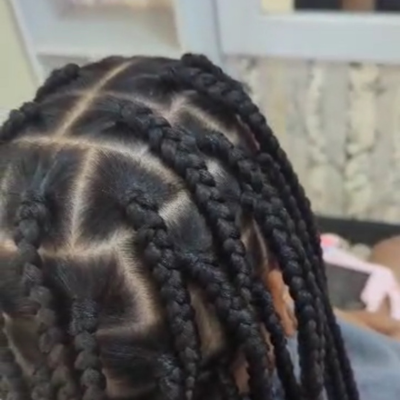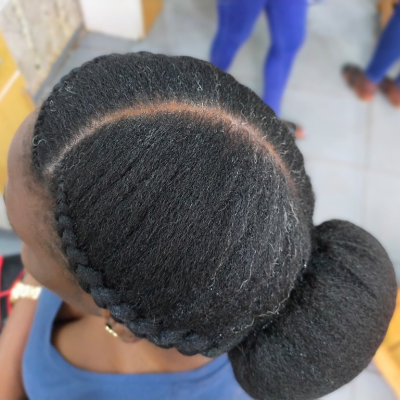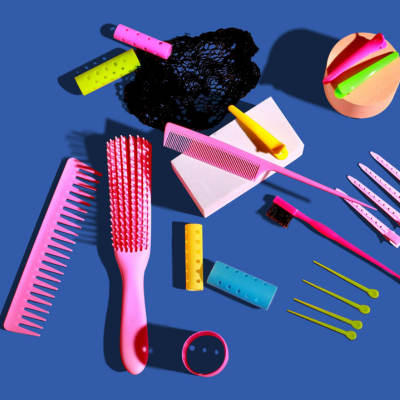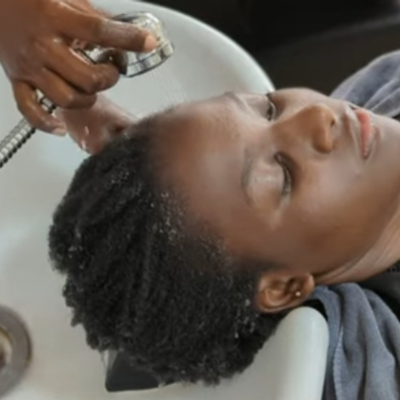- Support 24/7
- +1 (480) 468-4543
- livara@mylivara.com
Debunking 9 Myths About Natural Hair: Truths You Need To Know

Are Your Hair Products Causing Breakouts? How To Deal With It
August 16, 2024
How To Prevent Breakage When Wearing Braids: 3 Simple Tips
August 21, 2024
Natural hair is beautiful, versatile, and unique, yet it is constantly surrounded by numerous myths that often mislead and confuse people. These myths can affect how people care for their natural hair, leading to hair practices like relaxing, that may not be beneficial. It’s time to debunk some of these common myths and provide clarity on what natural hair truly needs. Let’s dive into some prevalent myths about natural hair and uncover the facts behind them.
Myth 1: Natural Hair Doesn’t Grow
One of the most persistent myths is that natural hair doesn’t grow. This misconception often stems from the fact that natural hair can shrink significantly due to its curl pattern, making it appear shorter than it actually is. In reality, natural hair grows at the same rate as any other hair type, typically around half an inch per month. The key to retaining length is proper care and avoiding practices that cause breakage, such as excessive heat styling and harsh chemical treatments like hair bleaching.
Fact: Consistent care practices like regular moisturizing, gentle detangling, and protective styling can help you retain length and promote healthy growth. Trimming split ends regularly can also prevent breakage and help your hair grow longer.
Myth 2: Natural Hair Is Unmanageable
People often label natural hair as unmanageable, but this couldn’t be further from the truth. People can easily manage natural hair with the right knowledge and products. It’s important to understand your hair’s unique texture and needs. Techniques such as finger detangling, protective styling, and using moisturizing products can make natural hair care much more manageable. Additionally, embracing the natural texture of your hair rather than trying to alter it can significantly simplify your hair care routine.
Fact: Learning specific techniques that suit your hair type, such as the LOC (Liquid, Oil, Cream) method for moisture retention, can make managing natural hair easier. Using satin bonnets or silk scarves and pillowcases can also reduce friction and prevent tangles and breakage.
Myth 3: You Need to Wash Natural Hair Every Day
Another common myth is that natural hair needs to be washed every day. In fact, frequent washing can strip natural hair of its essential oils, leading to dryness and breakage. Natural hair tends to be drier than other hair types because the natural oils produced by the scalp have a harder time traveling down the curls and coils.
Fact: Washing natural hair once a week or even less frequently is often sufficient. Incorporating a pre-poo treatment (applying oil or conditioner before shampooing) can protect hair from harsh shampooing and help retain moisture. In between washes, refreshing with water and leave-in conditioner can help maintain moisture. Make sure to follow up with a natural oil to lock in the moisture. Using sulfate-free shampoos like the Livara Sapphire Hair Shampoo can also be less drying and better suited for natural hair.
Myth 4: Natural Hair Is Not Professional
There’s a misconception that natural hair is not professional, which can be particularly damaging in workplace settings. However, natural hair is entirely professional and can be styled in countless elegant ways.
Fact: From updos and buns, natural hair can be styled to suit any professional environment. Embracing natural hair in the workplace also promotes diversity and challenges outdated beauty standards. Companies and workplaces are increasingly recognizing and celebrating natural hair. The CROWN Act, which stands for “Creating a Respectful and Open World for Natural Hair,” aims to protect against discrimination based on hair texture and styles in workplaces and schools.
Myth 5: You Can’t Use Oil on Natural Hair
Some believe that oil is bad for natural hair, but oils can actually be highly beneficial. Natural oils like coconut oil, jojoba oil, and olive oil can help seal in moisture, add shine, and reduce frizz. It’s important to use oils appropriately, typically as a sealant after applying a water-based moisturizer. Overuse of oils, however, can lead to buildup, so it’s essential to find a balance that works for your hair.
Fact: Light oils like grapeseed and argan oil can be excellent for fine natural hair, while thicker oils like castor oil are better suited for thicker hair types. Scalp massages with oils can also promote blood circulation and hair growth.
Myth 6: All Natural Hair Is the Same
Natural hair is incredibly diverse, encompassing a wide range of textures, curl patterns, and densities. What works for one person’s natural hair may not work for another’s. Understanding your specific hair type is crucial for developing an effective hair care routine. Whether your hair is type 3A with loose curls or type 4C with tight coils, each hair type requires tailored care and attention.
Fact: Knowing your hair’s porosity (how well it absorbs and retains moisture) is also crucial. Low porosity hair benefits from lighter, water-based products, while high porosity hair thrives with heavier, more moisturizing products.
Myth 7: Natural Hair Requires Expensive Products
While there are many high-end products marketed for natural hair, achieving healthy natural hair doesn’t necessarily require a hefty budget. Many affordable products can be just as effective. Key ingredients to look for include shea butter, aloe vera, and glycerin. Additionally, DIY hair care treatments using natural ingredients like avocado, honey, and eggs can provide excellent nourishment without breaking the bank.
Myth 8: Natural Hair Is Always Strong
Natural hair may look strong, but it can be quite fragile because of its structure. Each curl, coil, or kink represents a potential point of breakage. Gentle handling is essential to prevent damage. Avoiding tight hairstyles that pull on the hair and using wide-tooth combs or fingers for detangling can help maintain the strength and integrity of natural hair.
Fact: Protective styles like braids, twists, and cornrows can help reduce manipulation and protect hair ends, but they should not be too tight to avoid traction alopecia. Regular deep conditioning treatments can also strengthen hair and reduce breakage.
Myth 9: Natural Hair Always Needs to Be in a Protective Hairstyle
The myth (which has been going around the natural hair world for years) says that if your ends remain protected, then your hair will continue to grow and waist-length hair will soon be yours. However, keeping your hair in a protective style for too long can cause breakage, tangling, knots and bring about loads of buildup.
Fact: Protective styles are incredibly important for natural hair health, but you don’t need them. If you love protective styles, focus on keeping them in for a short amount of time (about 3-6 weeks) and allowing your hair to go un-manipulated for some time.
Conclusion
Natural hair is a beautiful expression of individuality and heritage, deserving of the best care and understanding. By debunking these myths, we can foster a more informed and positive approach to natural hair care. Embrace your natural hair, celebrate its uniqueness, and remember that proper care and knowledge are key to maintaining its health and beauty. With the right information and practices, you can enjoy the full potential of your natural hair, free from the constraints of these myths. Remember, you are a gem.




